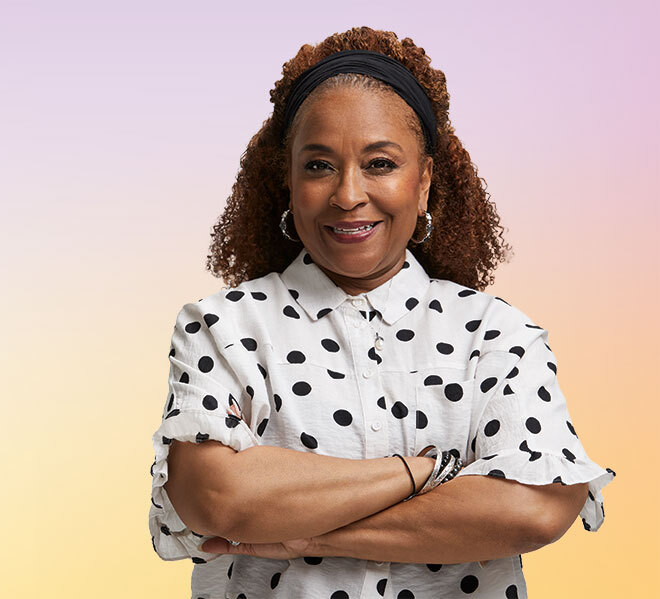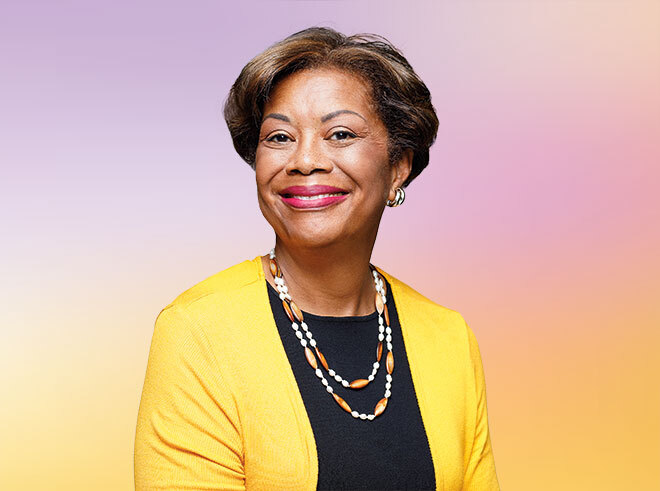
Chief Change Makers: The Power of the Chief Diversity Officer
Organizations have been working to improve diversity, equity, and inclusion for decades, often in a cycle of progress followed by retraction. After an increased focus on racial justice in 2020, many associations are hoping to seed long-lasting change through a new C-suite position: chief diversity officer.
The murder of George Floyd in 2020 fueled a wave of protests and a renewed sense of urgency around tackling the racial problems that have plagued the U.S. since 1619. As the country grappled with the continuing legacy of racism, many saw 2020’s activism as a spark to make significant change.
In both the corporate and association worlds, many organizations are elevating their diversity, equity, and inclusion initiatives by hiring new C-suite executives focused on the work. Whether their title is chief diversity officer or some other combination of “chief” and DEI, these leaders are seeking to create an environment where people—regardless of race, gender, sexuality, or ability—can be valued, heard, and accepted.
Three new DEI chiefs spoke to Associations Now about the current landscape of DEI work, the challenges they’re facing, and their goals. One noted that because DEI work has been going on for decades, it sometimes feels cyclical. These new executives hope to break that cycle and usher in a new era of progress.

Yolanda Chase
Chief Diversity Officer, Washington Technology Industry Association
For Yolanda Chase, who was appointed chief diversity officer for the Washington Technology Industry Association in December 2020, her DEI work goes beyond doing a job.
“It’s not only my passion, but it’s like being obedient to the calling of your life,” Chase says. “You know that that’s what you should be doing.”
With increased interest in DEI work in both the public and private sectors, she believes now is a pivotal moment to make change, especially since her association touches so many technology companies. “I have an opportunity to not only impact one organization, but many,” Chase says.
“We like to say that we are trying to do things that are shaping the future of tech when it comes to workplace equity.”
While now is a great time to be doing DEI work, it is not without difficulties. “The challenges are around being able to shift that mindset,” Chase says. “Yes, we do need to get diverse talent in the door. We need to hire more Black and brown people. We also want to make sure that they are properly assimilated into the organization, and they are integrated in a way that takes into consideration the intersectional aspects of that.”
If the renewed energy does anything for the field, Chase hopes it will help solve her greatest challenge. “We need more innovation and less resistance,” she says. “That’s my dream.”
Getting less resistance, however, requires people in organizations to do some personal work. “We have significant work to do on self, and this is the part that we often don’t want to address in companies,” Chase says. “But we have to be reminded that many people are doing the work from their level of consciousness.”
If that work on self is done and people approach DEI work intentionally, real change can be achieved. “We can tell a great story about dismantling the systems,” Chase says. “Or we can tell a great story about not creating them, and being very mindful about what are we creating at our organization that might be inadvertently discriminating against marginalized folks.”
When doing DEI work, she says, organizations can’t be timid. “I personally believe in taking some calculated risks when designing that DEI business model and when influencing and adopting that innovation,” Chase says. “I think you’re going to have to be open to taking some calculated risks. Maybe you do things like pilots or betas.”
While many people have been doing DEI work for decades and the nation still lacks equity, Chase says it is important to acknowledge successes, even if they are small.
“We have to congratulate ourselves and recognize when we are making incremental changes,” she says. “We are seeing more attention being paid by companies. Even if they don’t exactly know how to approach it, they are broaching the topic, saying, ‘We know we need to do something, and we need help in doing it.’”

Edna Kane-Williams
Executive Vice President and Chief Diversity Officer, AARP
Edna Kane-Williams says that although DEI work has been going on for decades, the movement feels different now.
“Sometimes the work can feel cyclical,” says Kane-Williams, who earlier this year was named executive vice president and chief diversity officer, a newly created position, at AARP. “I feel that we may be at an inflection point that signals serious change. The desire to create change is manifesting itself in a different way and a different level of intensity, so I am hopeful. There does seem to be different energy. One that says, it’s time to get this right.”
She has some context for that feeling. Kane-Williams has been involved in DEI work her entire career, at both associations and for-profit organizations. She was a member of ASAE’s 2002-2003 Diversity Executive Leadership Program, an experience that helped shape her thoughts on diversity and expand her network.
While she sees a new energy now, she doesn’t think change will be quick. “What I’ve learned in this work is that it’s definitely a marathon and not a sprint,” she says.
For DEI work to have impact, a few things need to happen. For one, it’s important that DEI has made its way to the C-suite and that this new leadership position reports to an organization’s chief executive. “That signals tremendous weight of the position,” Kane-Williams says. “It levels the playing field, so I’m not always in the position of appealing to people who are more senior than I am. It makes us all colleagues. It makes my voice equal in the room, equal to our advocacy work, to our program work.”
Another factor is funding. “This isn’t necessarily cheap work,” she says. “It doesn’t have to be extravagant, but there has to be a commitment to do this work and do it right,” including supporting it with a sufficient budget.
Kane-Williams also stresses the importance of metrics to ensure DEI programs are making an impact. “This is real work that has to have real measurement, real goals and objectives,” she says. “You have to be able to explain to the organization and your constituents how you are making a difference and how you will measure success. Sometimes, that means impacting performance reviews and salary reviews, because you have to put teeth in this work in order to ensure that it gets done correctly.”
Focus will help an organization pick the right measurements. “To increase your impactfulness, be really strategic about what you’re focusing on and go all in on a few items, as opposed to skin deep on many,” Kane-Williams says.
Finally, organizations need to make sure that staff understand that DEI work is organization-wide. At AARP, Kane-Williams is working on three areas—workforce, workplace, and marketplace—that require help from all teams.
“When you have one person or one office identified with this work, some people can translate that to: ‘This is your job,’” Kane-Williams says. “Diversity, equity, and inclusion is work that should touch everybody and should be an issue for everybody. Our strategies and what we are trying to do is going to literally touch every department in the organization.”
William A. McDade, M.D., Ph.D.
Chief Diversity, Equity, and Inclusion Officer, Accreditation Council for Graduate Medical Education
Throughout his career, Dr. William McDade has played a role in expanding diversity. As a young physician, he joined a committee tasked with improving admission rates of minorities at the University of Chicago Pritzker School of Medicine.
Through committees and administrative roles, McDade has stayed active in DEI work. In 2019, the Accreditation Council for Graduate Medical Education named McDade its first chief diversity, equity, and inclusion officer. Tasked with accrediting graduate medical education (GME) programs, ACGME has prioritized increasing diversity in the medical profession. While McDade took on the role before George Floyd was murdered, he hopes the momentum of the last year continues.
“Our hope is that the motivation is enough to get people to start being less defensive about terms like ‘structural racism’ or ‘antiracism,’ or things that we have been unlikely to suggest or talk about in the open,” McDade says.
One way that organizations can push through defensiveness is by putting requirements and measures in place for DEI work, which ACGME did for accreditation. “Because programs want to maintain their accreditation, they want to be in compliance with that particular requirement,” McDade says.
Because DEI work involves bringing diverse people together, sometimes objectives get lost in translation. In medical education, rather than creating a pipeline for new students, programs have been fighting over the few minority candidates currently available. “That is not what we intend at all,” McDade says.
To combat this, he launched an education campaign targeting GME programs. “We hope programs will work cooperatively with one another to try to increase the number of people on the pathway into medical school,” McDade says. “There is no reason a medical school should have a high school program and GME doesn’t. We want them to increase the size of the pie, not fight against another residency for the small slice that exists.”
ACGME is hoping to facilitate buy-in for DEI initiatives and encourage development of innovative solutions through peer learning. “The idea is to build learning communities that can come together and do some reverse ideation,” McDade says. “We want them to think about the barriers that GME sets before a learner, try to remove those barriers, and enable increased success of learners who enter GME and then complete it.”
Among these learning communities, ACGME is targeting those tasked with DEI at GME programs. Those professionals often face challenges if their organizations don’t provide them enough support. “The group is focused on helping DEI officers understand the sorts of challenges that exist and share information and experiences,” McDade says.
For ACGME, the ultimate goal is to have a medical field that reflects the diversity of the community, allowing patients access to care they need.
“If you don’t have doctors in your community, then you may not seek care outside of your community, and that will leave you with disparate care,” McDade says. “Our hope is to make sure that everybody who wants to have a physician in their community gets a physician in their community.”
From Left: Yolanda Chase, Edna Kane-Williams, and William A. McDade, M.D., Ph.D.







Comments